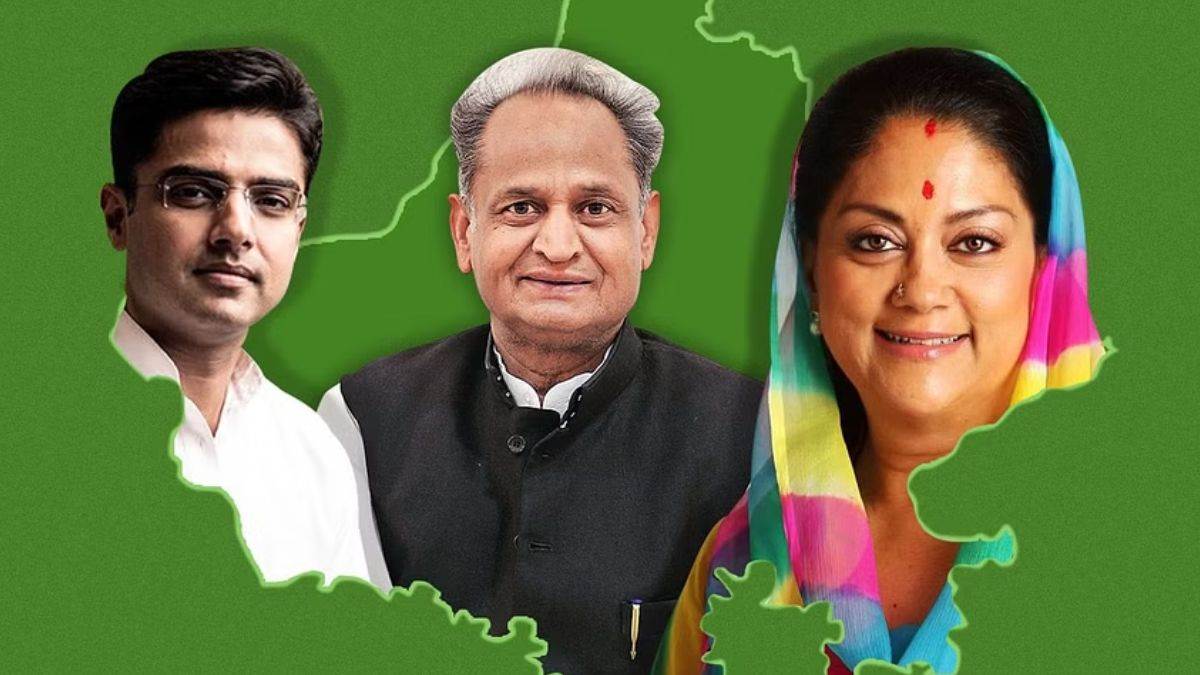History of Rajasthan
From ancient times till 1956
Rajasthan, or ‘the land of Rajas (kings)’ has a long and rich history as a geographic and cultural region. It was a part of several great empires of ancient India, including that of the Mauryas, the Shakas, the Guptas and Harshavardhana of Kannauj. Thereafter, it became the heartland of the Gurjara-Pratiharas and later, their successors i.e., the Rajputs. The Rajputs were divided into several clans such as Rathods, Sisodias, Chauhans, Tomars etc. Rajasthan derives a significant part of its identity from its Rajput heritage – attested to by the fact that it was formerly called Rajputana, ‘the abode of the Rajputs’.
In the following centuries, the Rajput kingdoms posed a challenge to Muslim invaders who made repeated attempts to vanquish their power. Gradually, however, Rajputs assimilated into the administration of the Mughals (with exceptions such as Maharana Pratap of Mewar who has become an icon of Rajput resistance). They reasserted their power post the decline of the Mughal empire but soon faced another formidable force: the British. The British colonisers eventually subjugated all Rajput states and organised them into a province named Rajputana. The kings were allowed internal autonomy in return for recognising British paramountcy.
After Indian independence in 1947 there began a complex process of the integration of Rajput princely states into the composite State of Rajasthan as we know it today. This happened in many stages with the Rajput Princes merging to initially form two states: the Matsya Union and the Rajasthan Union. Both of these were then merged into Greater Rajasthan which in turn became the State of Rajasthan in 1956 under the States Reorganisation Act, 1956.
Post-independence electoral history
Unlike other newly created states which already possessed a certain degree of cultural unity due to a common language, Rajasthan was an amalgamation of former rival princely states. This physical integration did not immediately lead to an emotional/cultural integration. The latter was slowly, over the succeeding decades. Lodha and Jain divide the post-independence political history of the state into three broad phases.
The first phase, beginning in 1947 and lasting till 1977, electoral politics was dominated by the Indian National Congress. This was an era when the clout of the former Rajput Maharajas was still a force to be reckoned with. During this phase, Rajasthan was primarily led by the Congress leader Shri Mohanlal Sukhadia who served as Chief Minister for 17 years in all. He has been credited with taking crucial initial steps to develop the social sectors (education and healthcare) in Rajasthan. However, Rajasthan remained insulated from national mainstream politics during this phase.
The second phase, running from 1977 to 1990, saw the decline of the Congress’ local leadership due to the rise of the ‘high-command’ style of party organisation. This decline was accompanied by a steady growth of the Bharatiya Janata Party, led by Shri Bhairon Singh Shekhawat who dominated Rajasthan’s politics after the exit of Shri Mohanlal Sukhadia. During this era, Rajasthan began playing a greater role in national level politics. Besides his vision for the state’s progress, Shri Bhairon Singh Shekhawat was noted for his acute political instinct with which he knitted together uncanny alliances to form three BJP governments as the CM.
The third phase, starting from 1990 and continuing till date has seen the growing dominance of the BJP and also a consistent bipolarity in electoral politics. What has emerged is a revolving door system where there has been a regular oscillation of power between the INC and BJP since 1993. While the INC has been able to defeat the BJP in alternating assembly elections, the gap between the two (in terms of vote share and seats) has been widening in the Lok Sabha elections, with BJP in the lead. Although the INC won the 2018 assembly elections, its vote share was narrowly higher than that of the BJP and it further faced a resounding defeat in the 2019 Lok Sabha elections in the state.
Some important trends in Rajasthan’s political history
Throughout its political history, Rajasthan has witnessed factionalism within the leading political parties. As the former princely states became better integrated, regional loyalties eroded but factionalism shifted to a caste-basis. Factions also arose from personal ambitions of party stalwarts. As early as 1958, the Mohanlal Sukhadia-led government of Congress weathered a major crisis when influential party leaders made allegations against him, demanding his resignation. Shri Ashok Gehlot’s government, which came to power in 2018, survived two crises triggered by in-fighting within the party. However, it must be noted that this weakness in party organisation has affected the Congress as well as the BJP. For example, in 1996, a faction of BJP legislators unsuccessfully colluded with state Congress leaders to topple the government of Shri Bhairon Singh Shekhawat.
As in other parts of the country, caste plays an important role in Rajasthan’s electoral politics. However, unlike most other states, there is no one single caste that is dominant across Rajasthan. The upper classes namely, Rajputs, Brahmins and Mahajans are spread out across the state but each of them constitutes less than 8 percent of the population. The numerically largest caste is that of the Jats but they are concentrated in specific regions. In the absence of a pan-Rajasthan dominant caste, a more unified state-wide political leadership and mobilisation became hard to achieve. In the recent decades, quota-politics has assumed tremendous significance, especially with the granting of OBC status to Jats in 1999 by the BJP-led Union government. This step caused the Jat community to shift its loyalty from the Congress to the BJP. Since then, a number of caste-based movements have sprung up, most notably from the Gurjars.
Commentators have also pointed at the sub-regional dynamics of the state which have shaped people’s political choices. The Congress has seen a decline in sub-regions such as Bagar, Shekhawati, Marwar, Dhundhar and Haroti – many of these happen to be more developed regions. At the same time, BJP has gained massive support in these regions. However, its support in the less developed regions of Vagar, Merwara and Matsya regions has not been as strong.
Click Here To Download The Paper


📌Analysis of Bills and Acts
📌 Summary of Reports from Government Agencies
📌 Analysis of Election Manifestos

